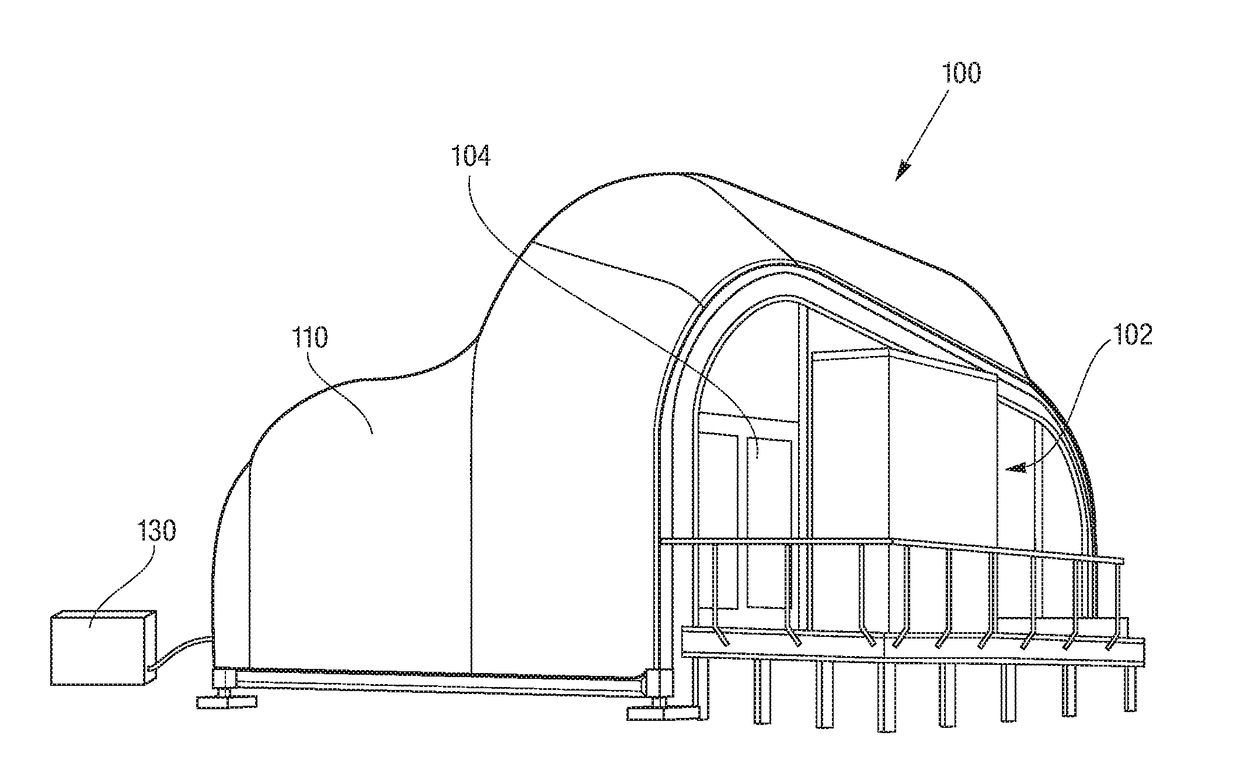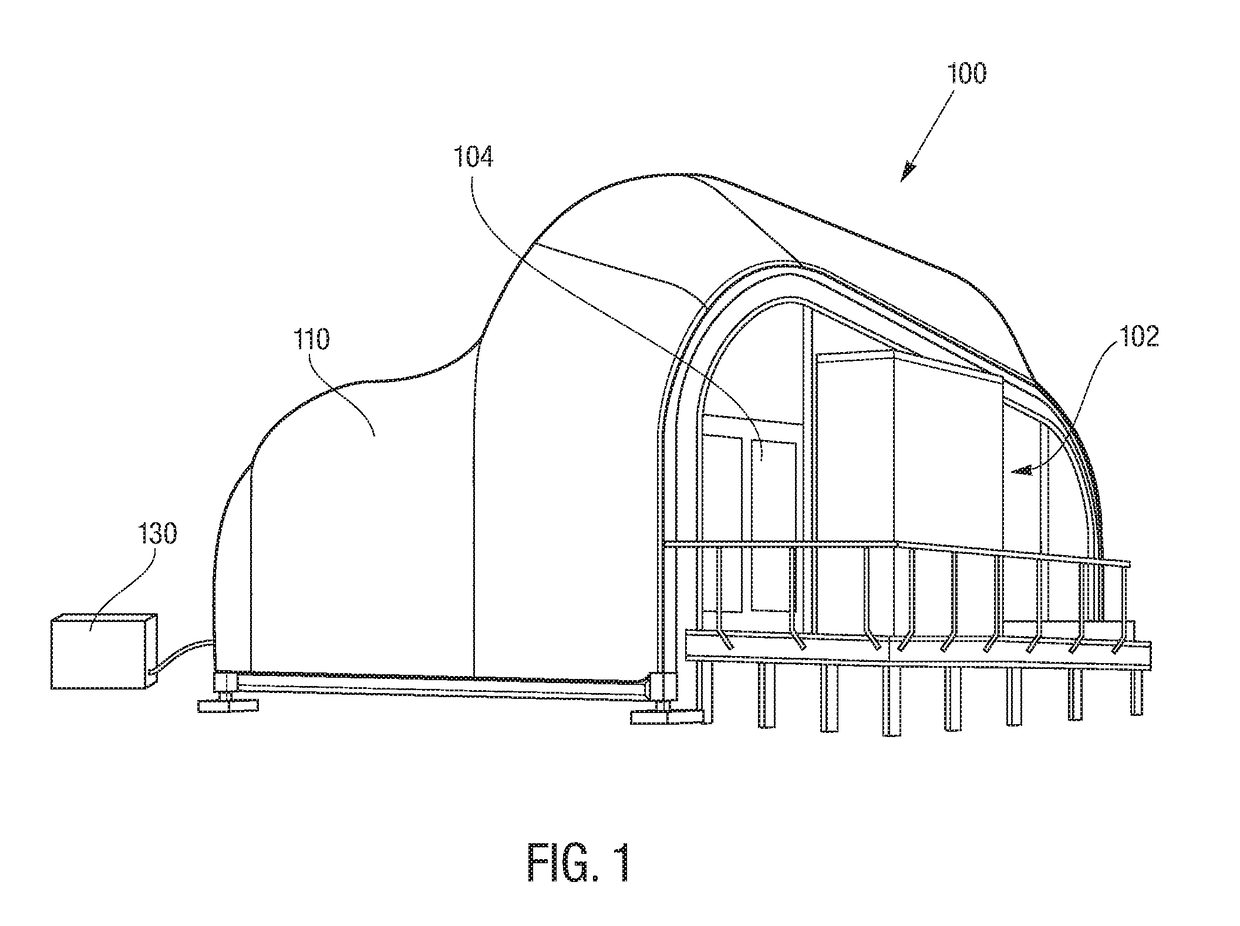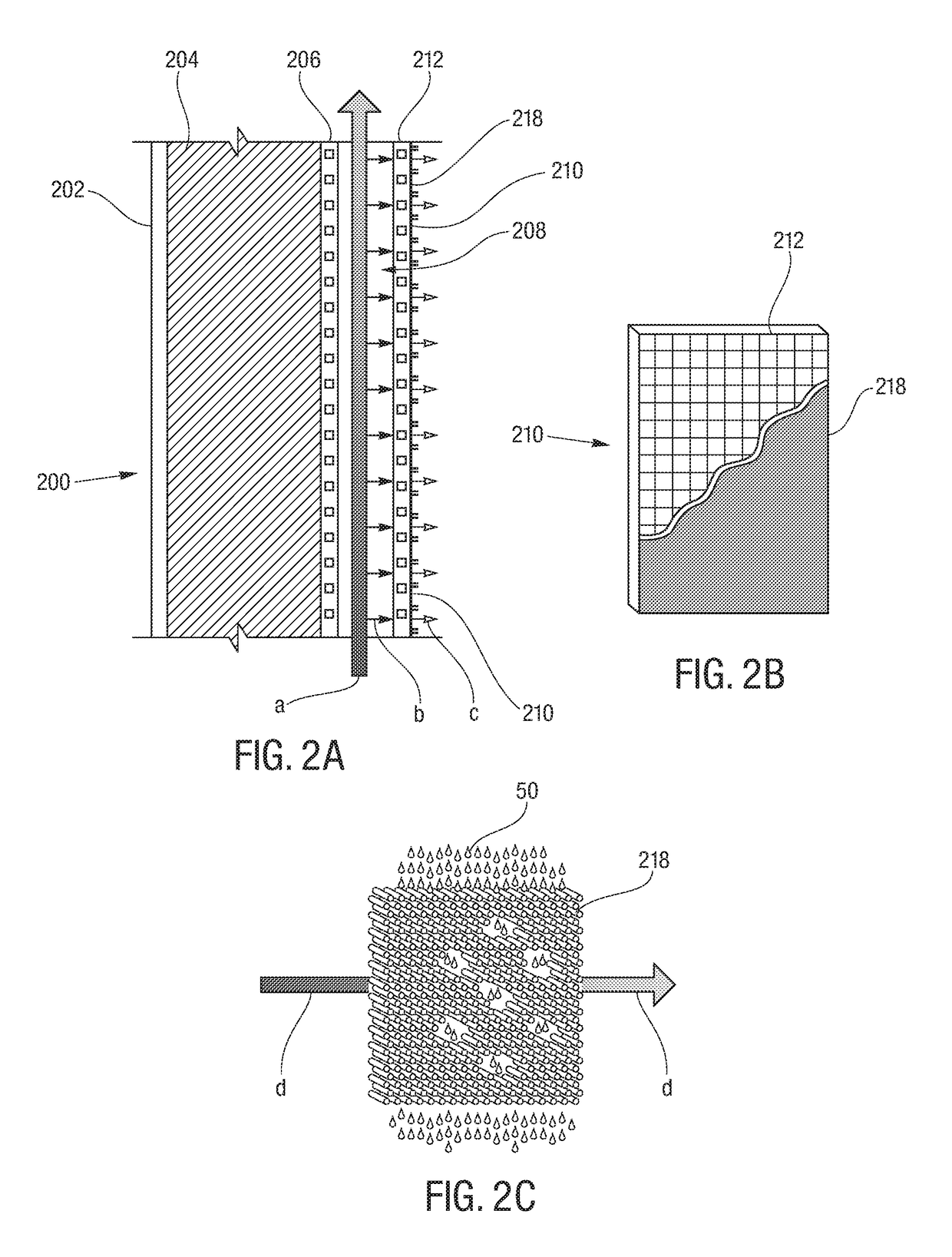Apparatus and method for passively cooling an interior
a technology for passive cooling and interiors, applied in the direction of ducting arrangements, lighting and heating apparatus, heating types, etc., can solve the problems of prior art wall assemblies being also susceptible to mold and moisture damage, and achieve the effects of reducing mold and moisture damage, and durable structur
- Summary
- Abstract
- Description
- Claims
- Application Information
AI Technical Summary
Benefits of technology
Problems solved by technology
Method used
Image
Examples
Embodiment Construction
[0033]The subject technology overcomes many of the prior art problems associated with cooling building interiors by using architectural membranes and membrane-based wall assemblies with nanoporous coatings. The advantages, and other features of the technology disclosed herein, will become more readily apparent to those having ordinary skill in the art from the following detailed description of certain preferred embodiments taken in conjunction with the drawings which set forth representative embodiments of the present disclosure and wherein like reference numerals identify similar structural elements. It is understood that references to the figures such as interior, exterior, up, down, upward, downward, left, and right are with respect to the figures and not meant in a limiting sense.
[0034]Referring now to FIG. 1, a house utilizing a system in accordance with one embodiment of the present disclosure is referred to generally by reference numeral 100. The house 100 includes an interio...
PUM
 Login to View More
Login to View More Abstract
Description
Claims
Application Information
 Login to View More
Login to View More - R&D
- Intellectual Property
- Life Sciences
- Materials
- Tech Scout
- Unparalleled Data Quality
- Higher Quality Content
- 60% Fewer Hallucinations
Browse by: Latest US Patents, China's latest patents, Technical Efficacy Thesaurus, Application Domain, Technology Topic, Popular Technical Reports.
© 2025 PatSnap. All rights reserved.Legal|Privacy policy|Modern Slavery Act Transparency Statement|Sitemap|About US| Contact US: help@patsnap.com



